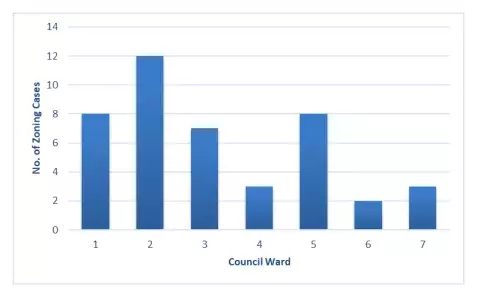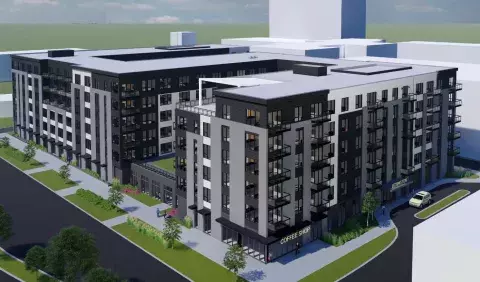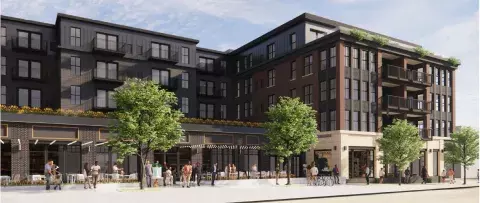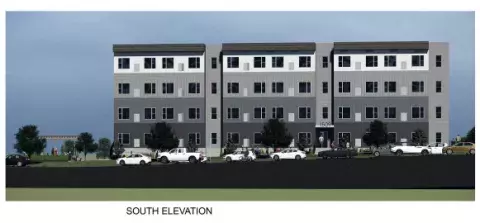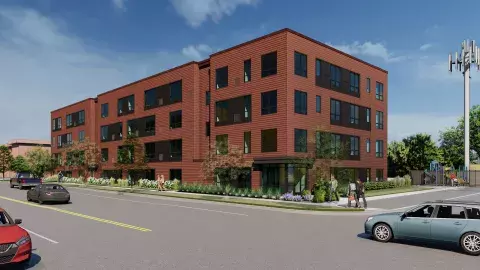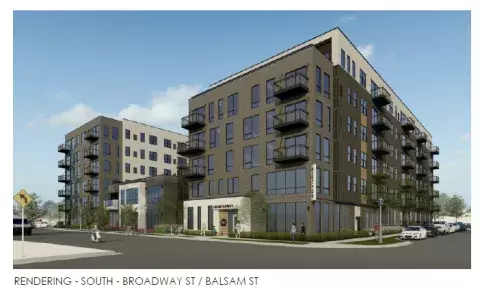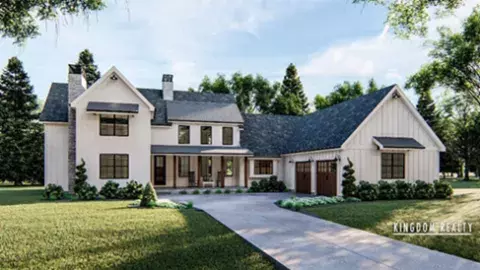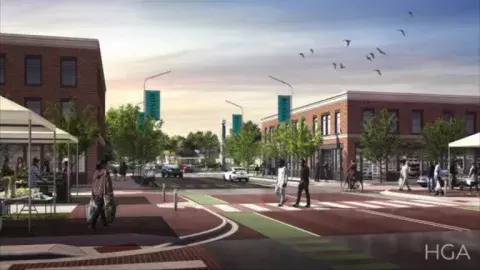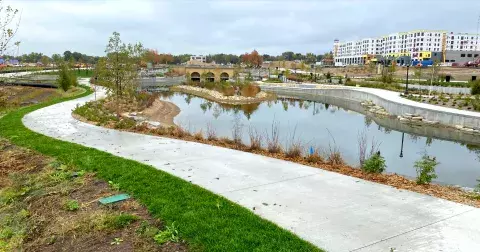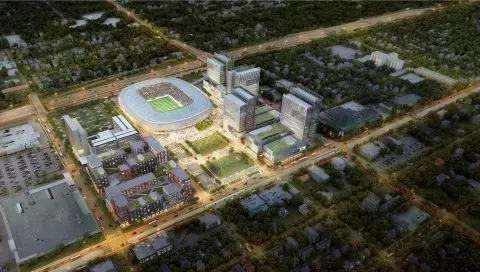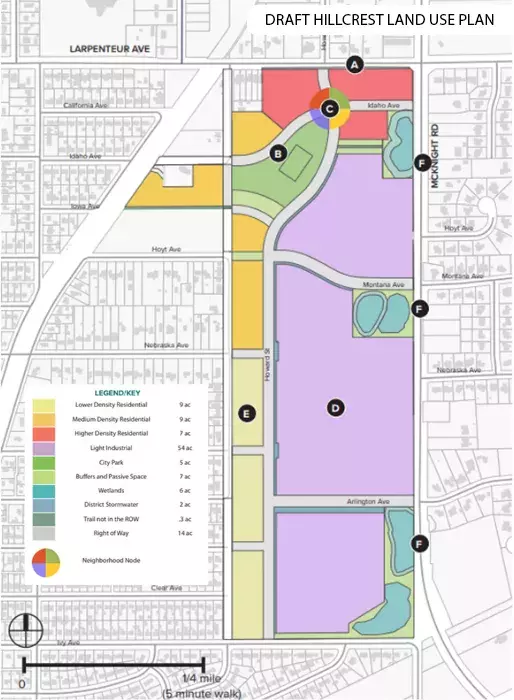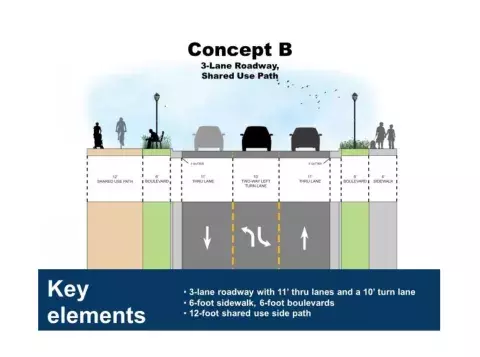Comprehensive and Neighborhood Planning Committee
The Comprehensive and Neighborhood Planning Committee (CNPC) advise on zoning studies, the adoption of Zoning Code text amendments, as well as some occasional district planning items. Planning staff conduct research and develop zoning studies that are prioritized as an implementation action of the Comprehensive Plan or district/area plans incorporated within as adopted addenda.
District and Small Area Planning work
Planning District 12 Plan update: The Planning Commission recommended the new Saint Anthony Park Community 10-year Plan as an update to the previous plan adopted in 2008 and amended in 2013. Neighborhood plans are generally updated every ten years and need to be consistent with the Comprehensive Plan. The St. Anthony Park Community Council (SAPCC) undertook an extensive survey and engagement process in 2017, including online surveys (400 respondents participated), in-person surveys to ensure diversity of input, and a supplemental business survey that fall. The plan was organized around the following questions:
- What will we do to ensure equitable access for all in housing, jobs, food, and movement from place to place?
- What will we do to respond to climate change, as a neighborhood within a city?
- What will we do to support the shift to a creative, more diverse economy?
Notably, the plan included chapters for Equity, Climate Change, and Economic and Business Development, all of which are above and beyond those typically included in a neighborhood plan; these topics represent issues most important to the neighborhood. Planning Commission held a public hearing on March 5, 2021 and recommended the plan to City Council on April 16, 2021.
Reconnect Rondo
Reconnect Rondo (RCR) is a community organization creating Minnesota’s first African American cultural enterprise district connected by a community land bridge. The African American cultural enterprise district is designed to repair, restore and revitalize Rondo.
This was a significant year for RCR and the Rondo land bridge project in terms of reigniting community and technical conversations and securing resources to further define and begin implementing the vision. In the spring, the State legislature approved a $6 million appropriation to MNDOT to support Reconnect Rondo. These funds will be used for master planning and predevelopment activities. The City also worked with RCR to secure a $150,000 Metropolitan Council Livable Communities pre-development grant to study anti-displacement and right to return policies specific to the area surrounding the project.
In June, RCR and the Urban Land Institute (ULI) convened technical experts and community members to develop further details for its 4P model (Public, Private, Philanthropy and People), and that work is ongoing. RCR presented an update on their progress to the Planning Commission and pledged to continue engaging them going forward. For more information, please visit RCR’s website: ReConnect Rondo.
Zoning Studies and Code Text Amendments
After a recommendation in 2020 from the Planning Commission to raise the zoning maximum for occupants of a dwelling unit, the City Council passed Ordinance 21-4 unanimously in March of 2021. The ordinance raised the number of permitted occupants in a home, removed consideration of relatedness from the zoning code, and changed the zoning code term from Family to the more accurate Household. Specifically targeted for study by the 2040 Comprehensive Plan Housing Policy 17 and City Council Resolution 18-1204, this text amendment contributes to more fair and equitable access to housing for Saint Paul’s diverse array of residents and household styles.
In 2018, the Planning Commission initiated a zoning study to update provisions in the zoning code pertaining to minimum parking requirements. The purpose of the study was to implement policies in the Comprehensive Plan such as reducing vehicle miles traveled in Saint Paul by 40% by 2040, and policies in the Climate Action and Resiliency Plan such as achieving carbon neutrality by 2050. In response to this policy direction, staff developed two packages of amendments for the Planning Commission to consider.
One package of amendments would eliminate minimum parking requirements from the zoning code, while the alternative package of amendments would reduce minimum parking requirements by introducing additional targeted exemptions and administrative reductions. In addition to reducing or eliminating minimum parking requirements, both options would amend travel demand management (TDM) provisions, introduce a TDM supplemental guide, provide bike parking standards that are specific to land uses, require the cost of parking to be unbundled from the cost of housing, and streamline processes and standards.
On March 19, 2021, the Planning Commission released the study for public review. After the study was released, staff gave two webinars nd offered presentations for any district council, business association, or neighborhood group that requested a presentation.
On April 30th the Planning Commission held a public hearing where 237 written comments were received. Roughly 70% of the comments were in favor of the option to eliminate minimum parking requirements. On June 25th the full Planning Commission voted to recommend that the City Council and Mayor adopt the option to fully eliminate minimum parking requirements. The City Council and Mayor followed the recommendation of the Planning Commission, and the proposed amendments were signed into law on September 1, 2021.
For additional information visit the Parking Study page.
Ford Open Space Amendments
The Planning Commission and City Council considered and adopted amendments to lot coverage requirements in the Ford Site Zoning and Public Realm Master Plan that brought implementation of the regulations more in line with the original intent of the Master Plan by clarifying what could be used for a project to receive a lot coverage bonus and more directly incentivizing green roofs.
Homeless Services
In November 2020, an emergency ordinance was approved by the Mayor and City Council to permit services to unsheltered homeless individuals in a former fire station at 296 7th Street West (“Freedom House”) on a temporary basis, tied to the COVID-19 pandemic. An emergency ordinance was needed, in part, because the principal use of daytime services to people experiencing homelessness is not defined in the Zoning Code. On recommendation from the Planning Commission, the City Council adopted the Homeless Services zoning code amendments in November 2021 to create a definition and standards for a “homeless services facility” (sometimes also called a “day shelter”) and allow the use (past the pandemic) in many locations across the city, subject to certain standards. Such facilities are part of the City’s coordinated response to the housing crisis and unsheltered populations.
Religious Accessory Uses
Upon receiving a great deal of comment via an October public hearing for the Religious Accessory Uses Zoning Study, the Planning Commission recommended zoning code amendments that would make it clearer and easier for religious institutions to incorporate common complementary activities on their campuses, including services to people experiencing homelessness. The City Council acted on the recommendation in January in order to meet the February 1, 2022 deadline that was established by a 2019 legal agreement tied to Listening House in Dayton’s Bluff.
In April 2021, the Planning Commission initiated the 1-4 Unit Housing Study to evaluate the potential for allowing more neighborhood-scale housing across the city in response to current housing needs and future demands and direction from City Council Resolution 18-1204 and 2040 Comprehensive Plan policy. The study is structured in two phases, with Phase 1 focused on enabling physically smaller homes and removing barriers to the construction of accessory dwelling units (ADUs). The Phase 1 text amendments were adopted by the City Council on January 19, 2022.
Phase 2 of the study, which involves a broader scope of policy questions and review of the Zoning Code to support greater housing diversity such as duplexes, triplexes, and fourplexes in more places as well as facilitating more types of single-family homes, is in the technical analysis and public engagement stage in late 2021, and this will continue in 2022.
Industrial Zoning Study
The Planning Commission initiated a study to evaluate the compatibility of allowed uses in industrial districts with the district intent as well as their consistency with recently adopted policy in the 2040 Comprehensive Plan.
Inclusionary Zoning Study
Following spirited deliberations and a denial by the Planning Commission of the Lexington Station Apartments site plan in the spring, the Planning Commission discussed and adopted a resolution recommending that the City re-initiate a study about Inclusionary Zoning, emphasizing the importance of adequate resources and staffing for it. In September, the PED staff released a Request for Proposals for a technical consultant to study a variety of anti-displacement and community wealth-building tools, including inclusionary zoning.


